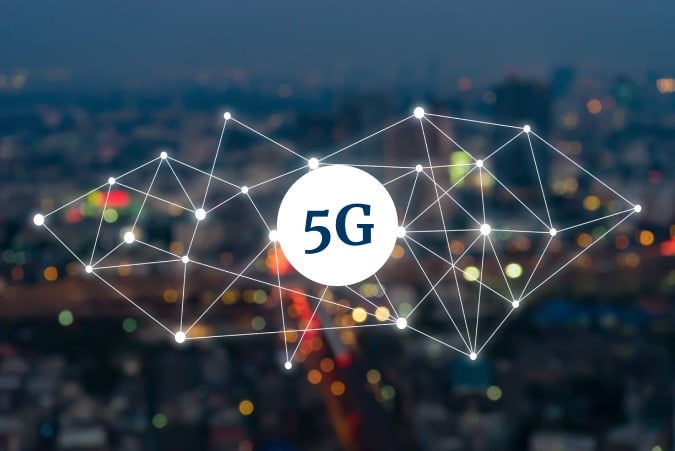 WASHINGTON: DARPA is seeking novel ways to boost the strength of radio signals to help DoD expand 5G wireless connectivity around the globe, without just pumping out more electrical power, says Tim Hancock, program manager for the effort.
WASHINGTON: DARPA is seeking novel ways to boost the strength of radio signals to help DoD expand 5G wireless connectivity around the globe, without just pumping out more electrical power, says Tim Hancock, program manager for the effort.
To that end, DoD’s far-future research agency has awarded a $497,000, one-year study contract to tiny wireless startup MixComm to demonstrate silicon-based millimeter wave (mmWave) power amplifiers. The “exploratory” award was made in response to Open Office Broad Agency Announcement (BAA) from DARPA’s Microsystems Technology Office (MTO).
“These pre-decisional studies are often funded by DARPA to understand if there is sufficient justification to warrant a more formal investigation of a particular technology or research topic,” Hancock said in an email. “The technical goal of MixComm’s work with DARPA under this effort is to try and simultaneously push the bandwidth, efficiency, and linearity of millimeter wave (mmWave) power amplifiers. This has direct applicability to 5G.”
DoD has a number of initiatives designed to rapidly shift DoD facilities, troops on the battlefield, and eventually even robots to 5G wireless communications capabilities to increase the military’s sorely overstretched bandwidth. These range from research and development efforts on improving the efficiency of its 5G spectrum usage, to working with commercial providers to build 5G cell towers at myriad bases.
“MixComm develops mmWave Radios,” a company spokesperson elaborated in an email. “These solutions are used in 5G and Satellite Communications and offer tremendous bandwidth, capacity and low latency. mmWave frequencies are being used in cellular communications for the first time in 5G. These frequencies go from 24GHz to 47GHz and are referred to as the FR2 bands. With funding from DARPA, MixComm is able to develop 5G mmWave power amplifiers with groundbreaking output power and efficiency.”
All radios actually require an amplifier of some sort to pump up transmitted signals so they can reach distant receivers, Hancock explained.
“A mmWave Power Amplifier is an amplifier that makes that signal larger and often strives to do so with high efficiency to minimize the amount of power that is lost to heat. All signals, including mmWave signals, need to be amplified before they leave an antenna so that they can travel further distances when radiated through the environment, thus providing reliable connections between radios,” he said.
One of the benefits of mmWave radios is that they use “frequencies 10 [times] higher than what we use today,” the MixComm spokesperson said. “With 4G and Wi-Fi, we use frequencies below 6 GHz, but mmWave uses [greater than] 24GHz bands – enabling faster data rates that aren’t possible with other frequencies. For example, most people have seven or eight wireless connections in their home on Wi-Fi. When one person uses Netflix, everyone else gets clogged and wireless speeds dramatically drop. With mmWave, this wouldn’t happen.”
‘The bad day’: DISA’s forthcoming strategy prepares for wartime coms
“It’s great to have internet day to day in peacetime,” said Lt. Gen. Robert Skinner, director of the Defense Information Systems Agency, “but it’s more imperative to have it when bullets are flying.”


























